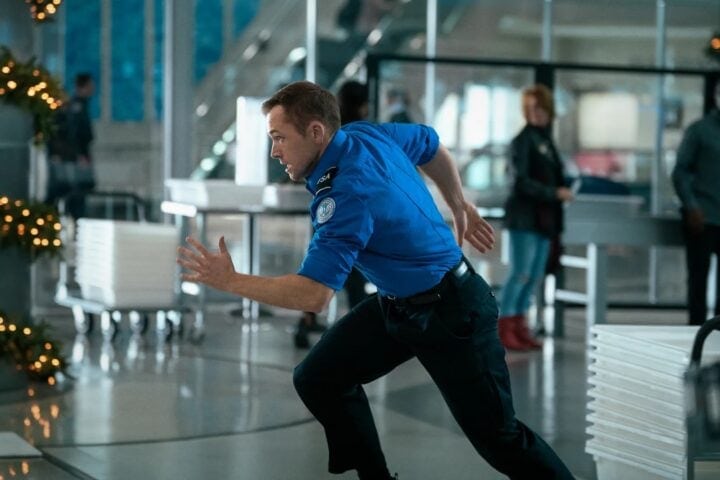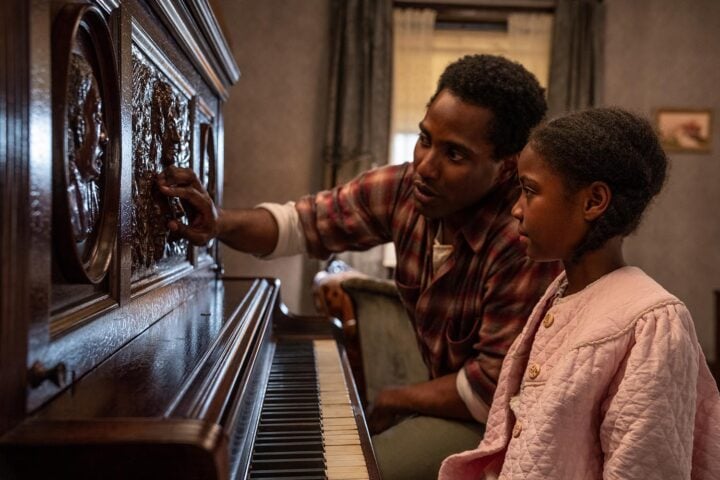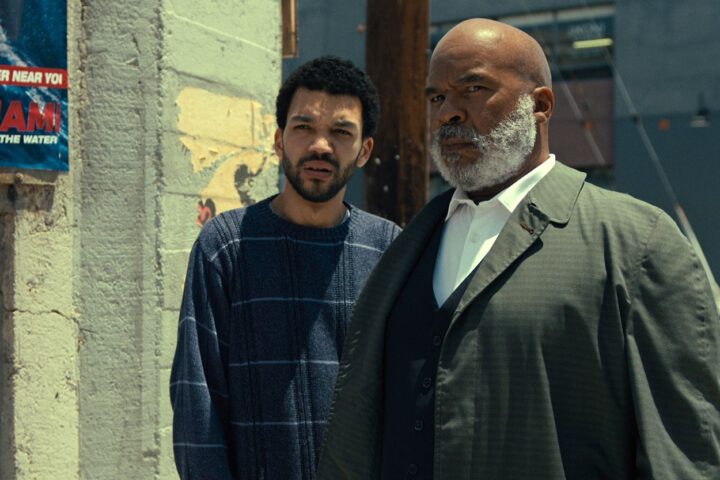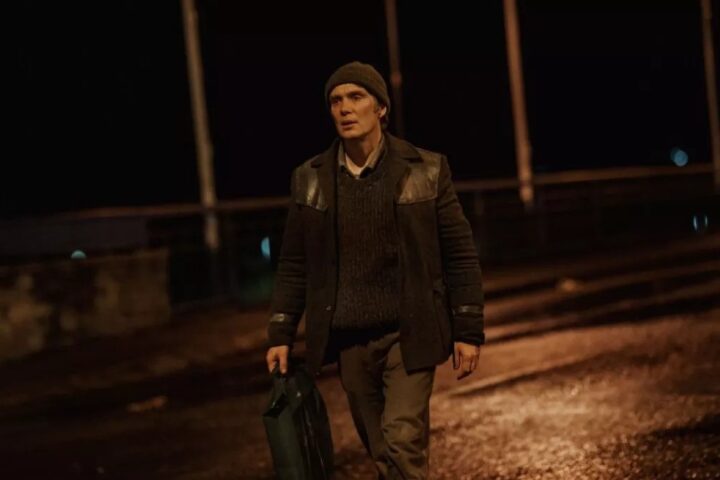Jane Schoenbrun’s defining cinematic preoccupation was clear from their first feature, We’re All Going to the World’s Fair. Young people in the digital age share a symbiotic relationship with the culture that exposes them to a world beyond their lived experiences, and the moving images these impressionable young minds consume end up consuming them.
Schoenbrun moves forward by looking back at the ’90s in their sophomore effort, I Saw the TV Glow, a mesmeric but frequently muddled exploration of transgender self-actualization through identification with a beguiling television program. The disconnect between story and style feels pronounced here, whereas in the writer-director’s first feature these modes of meaning-making felt mutually reinforcing. The film’s thematic content represents a watershed moment for trans cinema, yet it finds expression on screen most often through watered-down genre hallmarks.
I Saw the TV Glow finds Schoenbrun pushing this line of inquiry again with a focus on the strange pull of video. While the film contains many straightforward linear plot elements from a coming-of-age tale, the approach remains oblique and opaque. It becomes as difficult for a viewer to tease out the real meaning of a moment as it is for the protagonist.
“I think that I like TV shows,” Owen (Justice Smith) confesses when fellow outcast Maddy (Brigette Lundy-Paine) quizzes him on his sexuality. This revelation might sound like a cop-out, but it may be the only instance in I Saw the TV Glow where he’s truly honest with himself and others. As a mid-’90s youth alienated from all aspects of his sterile suburban upbringing, he draws meaning and belonging from the adventures of Isabel and Tara (Helena Howard and Lindsey Jordan) on the campy and creepy teen late-night show The Pink Opaque. In Maddy, he finds a partner in obsession as they geek out over episode guides and other fandom miscellanea.
But as they further immerse themselves in the show, Maddy picks up on a different transmission emanating from the tube. She believes this subliminal messaging, which Schoenbrun elevates out of subtext to make it the central experience of watching I Saw the TV Glow, encourages the disaffected teens of the film to confront the fear of what lurks inside. Owen might hear this message, but he’s not yet ready to listen. Across several decades of self-turmoil (Smith even plays the older Owen under mounds of heavy makeup), he tries to reconcile himself to the truth that came easily to his only friend. Even though the world makes more sense inside the screen, he resists Maddy’s idea that The Pink Opaque could supplant his reality altogether.
Schoenbrun floats freely between Owen’s teenage confusion and midlife reckoning with those formative years, just as the edit interweaves his confounding everyday life with the show that captures his imagination. It’s a structurally innovative method of conveying the “egg crack,” a person’s first moment of clarity around their gender mismatch. I Saw the TV Glow is at its most thrilling when channeling this notion of trans temporality, an understanding that the past isn’t a series of fixed events but a set of stories open to reinterpretation in the future.
This porousness ultimately gives way to an aggressive permissiveness in the film’s aesthetic. I Saw the TV Glow becomes mired in genre tropes that pull focus away from the beating, bleeding heart of Smith’s performance and Schoenbrun’s script. Horror flourishes rob the momentum gained through the intricate montage by Sofi Marshall. Schoenbrun uses the resources at their disposal to create many elaborate visualizations of Owen’s dread, yet the obviousness of these images as rendered by cinematographer Eric Yue undermines their power.
As the film continues, I Saw the TV Glow becomes more prone to externalizing the dysphoria that Owen experiences. These surrealistic nightmares overtake the film and pull focus away from Smith, whose aching vulnerability in recognizing the emotion he cannot express proves to be the scariest part of the film. Stuffing the frame with simplistic signifiers severs the audience’s subjective identification with the character by placing them at a safe distance away.
Unlike We’re All Going to the World’s Fair, which recreated the attention suck of online video to mirror its protagonist’s journey into an internet role-playing game, the lush details of Schoenbrun’s imagination do not dictate the form of I Saw the TV Glow. They overwhelm it. Because the filmmaker has such a singular sense of storytelling acumen, any craftsmanship repurposed from masters of midnight films like Lynch and Cronenberg sticks out. Especially in a work that so poignantly and profoundly examines what it means to become oneself, it strikes a discordant tone for Schoenbrun to lean so heavily on the artistic signature of others.
Since 2001, we've brought you uncompromising, candid takes on the world of film, music, television, video games, theater, and more. Independently owned and operated publications like Slant have been hit hard in recent years, but we’re committed to keeping our content free and accessible—meaning no paywalls or fees.
If you like what we do, please consider subscribing to our Patreon or making a donation.






